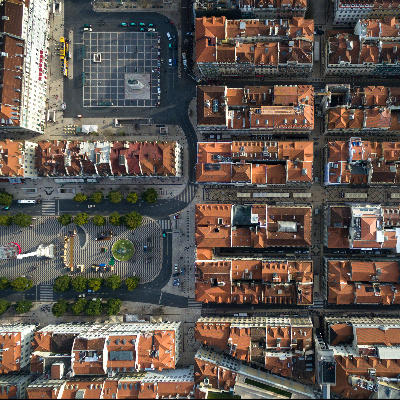House prices
14 July 2019
Forecasts of stagnating residential market prices have not yet taken shape. According to the National Statistics Institute (INE), the Housing Price Index for the first quarter of 2019 had an increase of 9.2% over the homologous period (first quarter of 2018). The numbers for the last quarter of 2018 revealed a growth of 3.6% (compared to the last quarter of 2017, an 9.3% increase).

by Jeffrey Czum
Lisbon no longer leverages growth. Whereas in Porto…
According to Confidencial Imobiliário (CI), a database that receives information from around 600 real estate agents, the annual increase in Lisbon was 10.9%, the national average was 15.6%. In the previous quarter, 21.4% of the registrations are entered in the capital and 16% in the rest of the country. These figures are an indicator to keep in mind: the increase in the value of houses in Lisbon is currently below the national average. To understand how pertinent this trend may be, note the contrast with recent INE records: between Q1 2016 and Q2 2018 prices increased by 16.7% in Portugal. In the same period (according to CI), house values grew by 46.8% in the municipality of Lisbon.
Porto recorded a record value of 28.8% against the prices of the first quarter of 2018. Since (still according to CI) in 2017 and 2018 alone, 5666 applications for home licensing (Lisbon accounted for 7517) were submitted in a total of 830 residential projects. Two-thirds of these projects were located in the historic city center. Tourism has been primarily driving the rehabilitation in the center of Porto: 62% of the homes belong to T1 and T2 typologies.
And in the rest of Europe?
In the European Union, housing prices rose 4.0% compared to the first quarter of 2018 and 0.3% compared to the fourth quarter. The most significant rise in house prices compared to the first quarter of 208 was recorded in Hungary (11.3%), followed by the Czech Republic (9.4%) and Portugal (9.2%). At the opposite end is Italy, the only country that has experienced negative price developments: down 0.8% from the first quarter of 2018.
Conclusions
Until recently, rising house prices in Lisbon represented a substantial weight in the perception of the real estate appreciation the country was witnessing (which remains well above the European average). Some even insisted that the capital’s numbers had to be read independently of the rest of the country. Indeed, the sharp disproportion between demand and supply in the Portuguese capital has positively influenced the value of real estate assets in the municipalities which border Lisbon. And, who knows, it may have a positive effect on the rest of the country.
After all, how many foreign investors would not have considered Porto as an alternative to the business opportunity they failed to glimpse in Lisbon? (allow me to answer) A lot. They look at the square meter values and they wonder if there’s much space for appreciation…


















